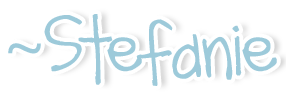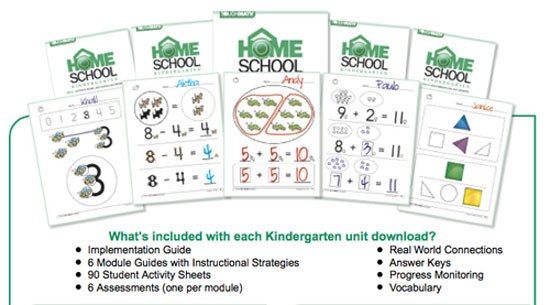About TouchMath
TouchMath is a multi-sensory math program for grades pre-k through second grade. It is designed to engage all of the learning styles. Their philosophy: Reach and Teach All Learners. They do this by incorporating four of the major senses, touch, hearing, seeing, saying, into the program through the use of manipulatives and work sheets. TouchMath helps students master concepts by seeing it, saying it, hearing it, touching it, and learning it.
The secret to their success are their signature TouchPoints. Each number, 1-9, TouchPoints that correspond to the number's value. So the number 3 has three TouchPoints. These provide students with a tactile experience while counting. And since most math operations are based on counting, these TouchPoints are used throughout the program to help the student achieve mastery.
Our Experience
 We received the complete TouchMath Kindergarten Program along with the TouchMath Tutor Kindergarten Software, 3-D Numerals, and TouchShapes. The manipulatives are not necessary for the program but they are certainly beneficial.
We received the complete TouchMath Kindergarten Program along with the TouchMath Tutor Kindergarten Software, 3-D Numerals, and TouchShapes. The manipulatives are not necessary for the program but they are certainly beneficial.My initial impression was positive. I loved how sturdy and well made the manipulatives were, the software was easy to install on our Mac, and I loved how clean and uncluttered the student pages were.
The program itself was divided into four units and further divided into 24 modules, six per unit. Unit A covers counting & adding and subtracting within 5. Unit B covers adding and subtracting within 9. Unit C covers understanding numbers 1-20. And lastly, Unit D covers measurement, data, and geometry.
 The implementation guide is very detailed with how to use the program. They recommend spending 2.5 minutes times for every year of the child's developmental age working on math. Each module includes anticipatory sets, pre-activities, guided and independent learning, review, real world connections and more.
The implementation guide is very detailed with how to use the program. They recommend spending 2.5 minutes times for every year of the child's developmental age working on math. Each module includes anticipatory sets, pre-activities, guided and independent learning, review, real world connections and more.During the review period we worked through Module 1 of Unit A with a focus on counting to 100. The pre-activites included things like counting various objects, writing numbers in sand or salt, going on a number walk. Then you moved into the guided activities using the work sheets. This module had the student working on counting ten numbers at a time. One day you'd be working on 21-30, then 31-40, and so on and so forth, until you had mastered counting to 100. It was a lot of writing and tracing which didn't necessarily thrill my "doesn't like to write" daughter so I spiced it up by adding in things like dot paint. It's important to know your student. ;)
 Since this module was mainly just counting and tracing the numbers, I decided to breakout the software. The software works with the mouse, keyboard, or touch screens if you have them. The program is bright and colorful with clear directions. It offers praise when the student gets the problem right and just a simple "try again" if they didn't. No stress.
Since this module was mainly just counting and tracing the numbers, I decided to breakout the software. The software works with the mouse, keyboard, or touch screens if you have them. The program is bright and colorful with clear directions. It offers praise when the student gets the problem right and just a simple "try again" if they didn't. No stress.I should mention that Kayleigh IS NOT a big fan of playing on the computer. Very rarely does she ever ask to play anything on it. If fact, she'll often have a fit if I even mention it. So it was to my surprise that she didn't once complain about using the program. The lesson's were short enough to keep from feeling overwhelmed and she loved Uno Bear and the beach theme. So far, all we've done with it is learn the numeral touch points, but boy did she learn them quickly. I'm excited to see what she thinks of the rest of the program.
A few weeks into our review period I decided to start Module 2. We hadn't really gotten into the meat of the program yet, or touched any of the manipulatives either and I wanted to include those in the review. So we alternated lessons between the 2 modules and it worked out well. Module 2 was on representing numbers with manipulatives. Boy did that work out for us. ;)
 She got to use the TouchShapes to represent the written numbers as well as learn what a number line was. As we work on each number, I bring out the 3-D Numerals so that she can practice counting the touch points that she learned from the computer software. They're also fun to just play with. ;) And Kayleigh was very pleased to find that this module had a lot less writing involved.
She got to use the TouchShapes to represent the written numbers as well as learn what a number line was. As we work on each number, I bring out the 3-D Numerals so that she can practice counting the touch points that she learned from the computer software. They're also fun to just play with. ;) And Kayleigh was very pleased to find that this module had a lot less writing involved.Next up for us will be writing and comparing numbers and we're both excited to see what's in store.
F.Y.I.
Website: http://www.touchmath.com/
Age Range: preschool-second grade
Pricing: $199.95 for the entire program or $59.95 per unit.
Manipulatives are extra. TouchShapes - $30, 3-D Numerals - $79,
TouchMath Tutor Kindergarten Software - $99





No comments:
Post a Comment